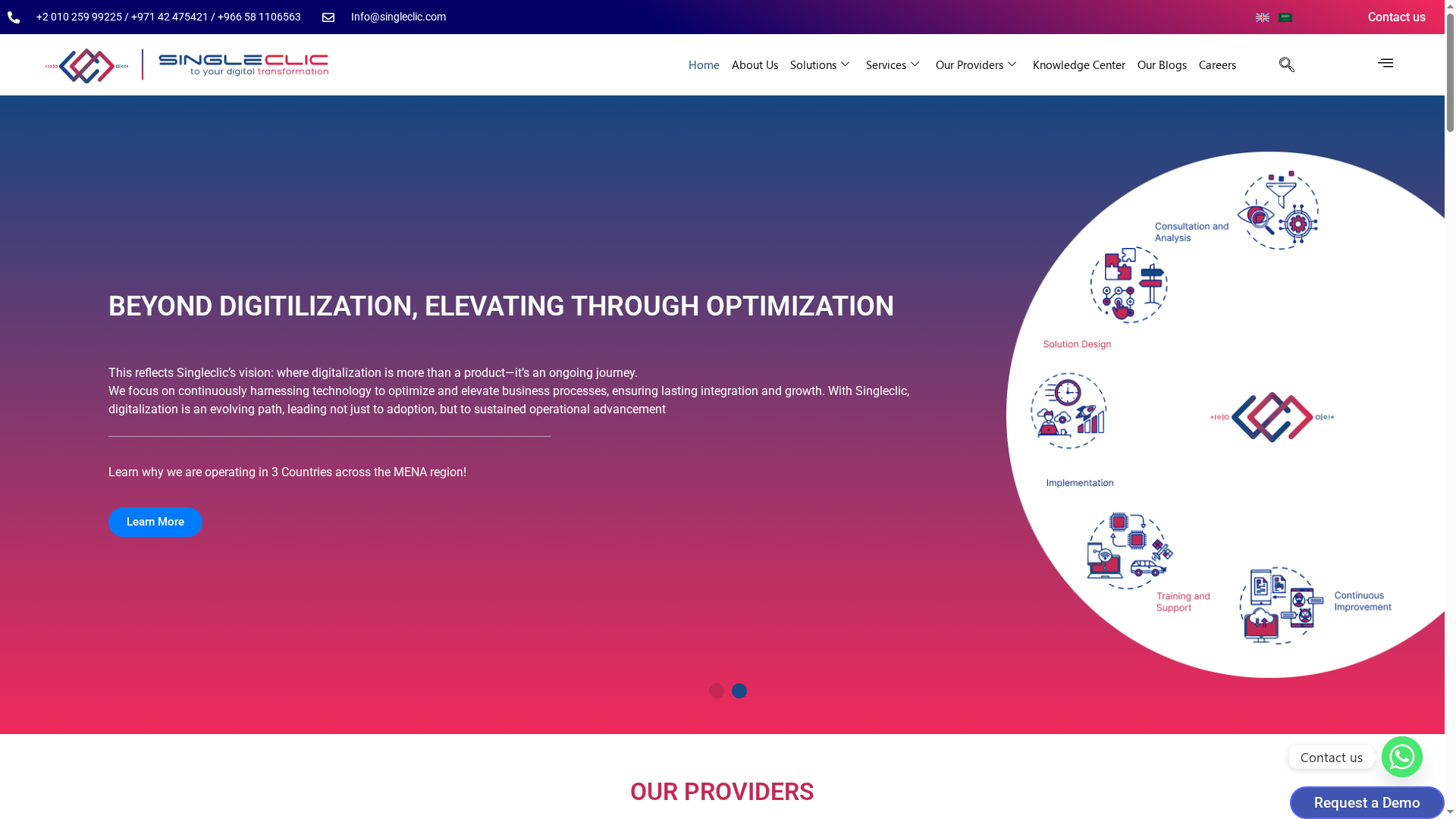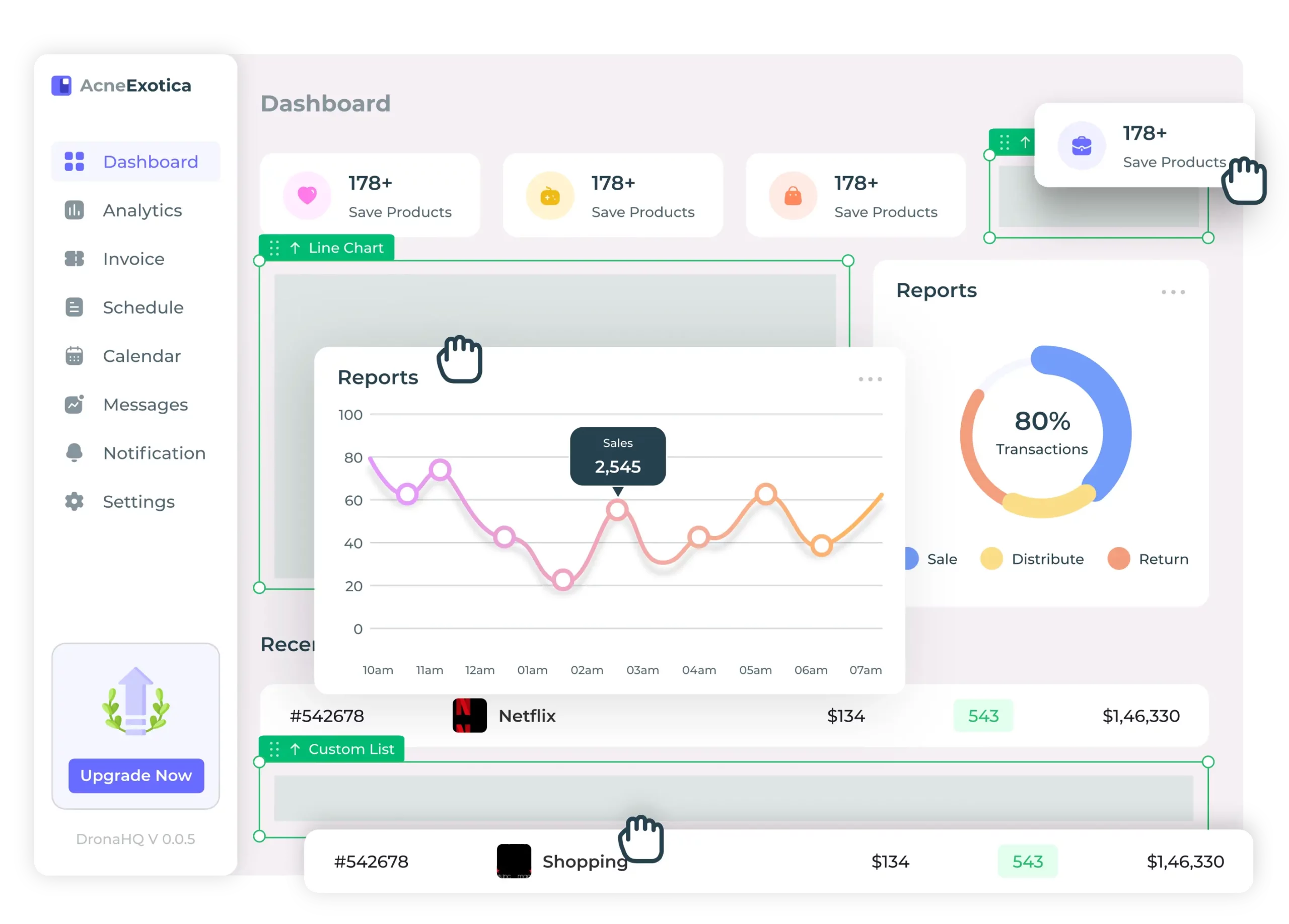Most american organizations know that digital transformation promises big rewards, yet nearly 70 percent of major initiatives fall short of their goals. This gap often comes from not having a clear, realistic starting point or missing crucial steps along the journey. With new technologies, data-driven choices, and changing team expectations, recognizing exactly what your business needs has never been more important. This guide breaks down the actions that set up a successful transformation so you can avoid common mistakes and drive real results.
Table of Contents
- Assess Current Digital Maturity And Readiness
- Define Clear Transformation Goals And KPIs
- Engage Stakeholders Across The Organization
- Select And Integrate The Right Digital Tools
- Prioritize Data Security And Compliance
- Empower Teams Through Training And Support
- Monitor Progress And Optimize Continuously
Quick Summary
| Takeaway | Explanation |
|---|---|
| 1. Assess Digital Maturity Accurately | Evaluate your organization’s current digital capabilities to create a strategic roadmap for transformation. |
| 2. Define Measurable Transformation Goals | Establish specific, actionable objectives that align technology with your core business vision. |
| 3. Engage All Stakeholders Collaboratively | Foster a culture of shared innovation by involving diverse teams from every level of the organization. |
| 4. Choose Tools Aligning with Goals | Select digital tools that enhance efficiency while being compatible with your existing systems. |
| 5. Monitor Progress and Optimize Continuously | Regularly track performance and refine strategies to adapt to changing organizational needs. |
1. Assess Current Digital Maturity and Readiness
Digital transformation begins with understanding exactly where your organization stands right now. Before launching into complex technological initiatives, you need a clear snapshot of your current digital capabilities and potential gaps.
According to research from SpringerOpen, organizations can benefit from data informed frameworks that support systematic self reflection on digitalization practices. This means conducting a comprehensive assessment that goes beyond surface level evaluations.
Key Assessment Areas Include:
- Technology infrastructure readiness
- Current digital skills within your workforce
- Existing technology integration levels
- Potential automation opportunities
- Data management and analytics capabilities
The goal is not just to identify weaknesses but to create a strategic roadmap for digital evolution. Think of this assessment as a diagnostic tool that reveals your organization’s digital health and potential growth trajectories.
To conduct an effective digital maturity assessment, consider partnering with digital transformation experts who can provide objective, data driven insights. At Singleclic, our low code platform Cortex can help organizations quickly map out their digital readiness and design targeted improvement strategies.
Remember that digital maturity is not a destination but a continuous journey of technological adaptation and organizational learning. Your first step is understanding your starting point with precision and strategic clarity.
2. Define Clear Transformation Goals and KPIs
Successful digital transformation requires more than good intentions. You need a precise roadmap with measurable objectives that align technology investments with your organization’s strategic vision.
According to research from Preprints.org, defining clear goals and scopes is fundamental to achieving effective digital transformation. This means developing specific, actionable targets that transform abstract concepts into concrete milestones.
Strategic Goal Setting Principles:
- Align digital initiatives with core business objectives
- Create measurable and time bound targets
- Ensure goals are realistic and achievable
- Include both short term and long term transformation objectives
- Build flexibility into your goal framework
Performance indicators serve as your organizational compass. As Wikipedia explains, KPIs are critical tools for evaluating organizational success and guiding strategic improvements. In the context of digital transformation, your KPIs might track metrics like operational efficiency, customer engagement, technology adoption rates, or cost savings.
For organizations in Saudi Arabia and UAE, this means developing KPIs that reflect regional business dynamics. Our low code platform Cortex can help you design custom dashboards that track transformation progress in real time, providing actionable insights tailored to your specific operational context.
Remember that effective KPIs are not static. They should evolve as your digital capabilities grow, offering a dynamic framework for continuous organizational improvement.
3. Engage Stakeholders Across the Organization
Digital transformation is not a solo mission. It requires collaborative effort and commitment from every corner of your organization, from frontline employees to senior leadership.
Research from Frontiers in Computer Science highlights the critical importance of involving diverse organizational actors in digital transformation efforts. This means creating an inclusive approach that breaks down traditional silos and fosters a culture of shared innovation.
Key Stakeholder Engagement Strategies:
- Create cross functional transformation teams
- Develop transparent communication channels
- Provide comprehensive digital skills training
- Encourage bottom up and top down feedback
- Recognize and reward transformation champions
According to CLEI Journal, successful digital transformation requires a comprehensive approach that considers multiple dimensions and perspectives. This means moving beyond traditional hierarchical communication models and creating platforms where every team member feels empowered to contribute.
In markets like Saudi Arabia and UAE, where organizational dynamics can be complex, stakeholder engagement becomes even more critical. Our low code platform Cortex can help facilitate this process by providing collaborative tools that enable seamless communication and workflow integration across different organizational levels.
Remember that genuine stakeholder engagement is about more than just information sharing. It is about creating a shared vision where every team member understands their role in driving digital transformation forward.
4. Select and Integrate the Right Digital Tools
Choosing the right digital tools is like assembling a precision orchestra where every instrument must harmonize perfectly to create transformative music. Your technology stack needs strategic alignment with your organizational objectives.
Research from ArXiv proposes a multidimensional evaluation framework for assessing technological maturity, emphasizing that tool selection goes far beyond surface level comparisons. This means developing a comprehensive approach that considers compatibility, scalability, and strategic potential.
Critical Tool Selection Criteria:
- Alignment with organizational goals
- Scalability and future adaptability
- Integration capabilities with existing systems
- Total cost of ownership
- Security and compliance features
Interestingly, ArXiv research introduces the concept of Ethics Readiness Levels, highlighting that responsible tool selection involves more than technical specifications. Organizations must consider ethical implications and potential societal impacts of their technological choices.
For organizations in Saudi Arabia and UAE, this means selecting tools that not only drive efficiency but also respect regional technological and cultural contexts. Our low code platform Cortex provides flexible solutions that can be customized to meet diverse organizational needs.
Check out our guide on digital solutions for business to gain deeper insights into making strategic technology investments. Remember that the right digital tools are not just purchases they are strategic partnerships that can fundamentally reshape your organizational capabilities.
5. Prioritize Data Security and Compliance
In the digital transformation journey, data security is not just a technical checkbox but a fundamental strategic imperative that protects your organization reputation, customer trust, and operational integrity.
Research from ArXiv highlights the critical challenges organizations face in digital innovation readiness, particularly around resistance to change and inadequate professional development in security protocols. This underscores the need for a comprehensive approach to data protection.
Key Data Security Strategies:
- Implement robust encryption protocols
- Conduct regular security audits
- Develop comprehensive employee training programs
- Establish clear data handling policies
- Create incident response frameworks
Interestingly, the Model for Assessment of Telemedicine emphasizes evaluating security from multiple dimensions medical, social, economic, and ethical perspectives. This multifaceted approach ensures that compliance goes beyond mere technical requirements.
For organizations in Saudi Arabia and UAE, this means developing security strategies that respect both international standards and regional regulatory landscapes. Our low code platform Cortex provides built in security features that help organizations maintain rigorous compliance standards.
For more insights into protecting your digital ecosystem, explore our guide on AI in data privacy protection. Remember that in digital transformation, your data security is only as strong as your weakest link.
6. Empower Teams Through Training and Support
Digital transformation is not just about technology implementation. It is fundamentally about empowering your people to navigate and thrive in a rapidly evolving technological landscape.
Research from ArXiv emphasizes the critical importance of targeted training programs and supportive institutional policies in enhancing digital preparedness. This means creating comprehensive learning environments that go beyond traditional skill development.
Strategic Training Approaches:
- Create personalized learning pathways
- Offer hands on technology workshops
- Develop mentorship programs
- Provide continuous learning opportunities
- Recognize and reward skill advancement
Interestingly, ArXiv research on future metaverse design suggests that effective training requires understanding user experiences and developing services that align with team capabilities. This means moving beyond generic training to create adaptive learning ecosystems.
For organizations in Saudi Arabia and UAE, this translates to developing training programs that respect cultural contexts while driving technological innovation. Our low code platform Cortex can facilitate this by providing intuitive learning interfaces that make digital skill acquisition more accessible.
Remember that training is an investment in your organization future. Empowered teams do not just adapt to change they become the drivers of transformative innovation.
7. Monitor Progress and Optimize Continuously
Digital transformation is not a destination but an ongoing journey of strategic adaptation and continuous improvement. Your transformation efforts require constant vigilance, measurement, and refinement.
Research from ArXiv proposes a comprehensive evaluation framework for assessing digital maturity, emphasizing the importance of systematic progress tracking. This means developing robust mechanisms to measure and interpret your digital transformation trajectory.
Key Optimization Strategies:
- Establish clear performance metrics
- Implement real time monitoring dashboards
- Conduct regular transformation health checks
- Create feedback loops across organizational levels
- Remain flexible and ready to pivot
The ArXiv research on Ethics Readiness Levels further highlights that optimization is not just about technological advancement but also about maintaining ethical alignment throughout your digital evolution.
For organizations in Saudi Arabia and UAE, this means developing monitoring approaches that are culturally sensitive and strategically agile. Our low code platform Cortex enables real time process optimization, allowing businesses to make runtime workflow adjustments without disrupting operations.
Continuous optimization is about transforming data into actionable insights. Your digital transformation strategy should be a living document that evolves with your organizational ecosystem.
Below is a comprehensive table summarizing the key strategies and steps for digital transformation discussed throughout the article.
| Main Step | Key Points & Actions | Benefits/Outcomes |
|---|---|---|
| Assess Current Digital Maturity | Evaluate technology infrastructure, digital skills, and integration levels | Identify strengths and gaps for a strategic roadmap |
| Define Transformation Goals and KPIs | Align initiatives with business objectives and set measurable targets | Achieve effective transformation and track success |
| Engage Stakeholders | Develop cross functional teams and transparent communication | Foster a culture of innovation and shared vision |
| Select Digital Tools | Choose tools that align with goals and ensure scalability | Harmonize technology with strategic objectives |
| Prioritize Data Security | Implement encryption, security audits, and training | Protect reputation and ensure compliance |
| Empower Teams | Offer tailored learning and hands-on workshops | Promote adaptability and drive innovation |
| Monitor Progress | Implement real time dashboards and conduct health checks | Enable continuous improvement and strategic agility |
Take Control of Your Digital Transformation Journey Today
The 7-Step Digital Transformation Checklist highlights common challenges leaders face like assessing digital maturity, setting clear KPIs, engaging stakeholders, and selecting the right tools. Achieving these goals demands not just technology but a strategic partner who understands your unique needs in the KSA, UAE, and Egypt markets. At Singleclic, we empower organizations to move beyond digitalization and embrace true optimization by addressing these pain points head-on with tailored ERP and CRM implementations, powerful business process automation, and our Arabic-enabled low-code platform Cortex specifically designed for this region.
Why settle for fragmented solutions when you can unify your digital efforts with one trusted provider? Our proven expertise in enterprise AI and process automation ensures you stay agile as you measure progress, protect data security, and continuously optimize workflows without downtime. See how leaders transform their operations at Singleclic and explore our capabilities in Business Process Automation and AI & Low-Code Platform Development to gain a competitive edge.

Kickstart your transformation with confidence by partnering with Singleclic today. Visit Singleclic now to discover how our integrated solutions can turn your digital transformation checklist into measurable success.
Frequently Asked Questions
How can I assess my organization’s current digital maturity?
To assess your organization’s digital maturity, conduct a comprehensive evaluation of your technology infrastructure, workforce skills, integration levels, and data management capabilities. Use this assessment to identify gaps and create a strategic roadmap for improvement within the next 30 days.
What are key performance indicators (KPIs) to set for digital transformation?
Key performance indicators for digital transformation should be measurable metrics that align with your organization’s goals, such as operational efficiency or customer engagement rates. Set these KPIs to evaluate success and ensure they evolve as your initiatives progress, ideally reviewing them every quarter.
How can I engage stakeholders effectively in the digital transformation process?
Engaging stakeholders effectively involves creating cross-functional teams, fostering transparent communication, and providing digital training. Schedule regular feedback sessions and recognition programs to empower team members and ensure everyone is aligned with the transformation vision.
What criteria should I consider when selecting digital tools for my organization?
When selecting digital tools, evaluate their alignment with your organizational goals, scalability, integration capabilities, and security features. Prioritize setting up a pilot program within 60 days to test compatibility and gather user feedback before full-scale implementation.
How can I ensure data security during digital transformation?
To ensure data security during digital transformation, implement strong encryption, conduct regular audits, and establish clear data handling policies. Focus on training your employees on security protocols within the first month to minimize risks.
What are effective training strategies for empowering teams in digital transformation?
Effective training strategies include creating personalized learning pathways and offering hands-on workshops tailored to your teams’ needs. Aim to implement continuous learning opportunities and mentorship programs to build a skilled workforce that adapts to new technologies quickly.
Recommended
- What Is Digital Strategy? Complete Executive Guide | Singleclic
- what are the 4 main areas of digital transformation
- managing digital transformation
- Digital Transformation Best Practices: A Guide to Success
- Building a Strong Online Presence: A Step-by-Step Guide for Small Businesses – Digital Marketing Agency – Market Link Solutions









